Finding Beauty in the Southern Ocean
Although our day-to-day view is often the same, there are still some delights to be seen in the Southern Ocean
16 March 2024
Heading through the Southern Ocean to Antarctica is a once-in-a-lifetime opportunity for many, but how does it live up to the expectation? Because the main purpose of our expedition is to collect water samples every 30 nautical miles, our routine of deploying and recovering the CTD, and collecting and processing water samples looks the same from day to day. Also, since the R/V Thompson is not an icebreaker, we knew we wouldn’t be able to get very close to the continent of Antarctica. But that’s not to say that we haven’t seen some truly amazing sights along the way!
Icebergs
As we headed south on our transit toward Antarctica, sea and air temperature dropped quickly each day. When had passed 60°S latitude in the Southern Ocean, we finally heard the call, “Ice on the starboard side!” Chief Scientist Seb Bigorre describes our first encounter with a majestic iceberg:
Slightly groggy from my night shift, I slowly made my way outside thinking a growler or some “chunk” of ice was out there. But as I finally got outside and turned the corner around the ship’s main structure, there it was, blocking the horizon on the starboard aft quarter: a majestic iceberg, tall and wide, flour white and carved like the straight cliffs of Albion, with hues of blue ice illuminating the shrouding fog around it. With its “Wow!” effect, this first harbinger of the polar world suddenly made our trip more real. Mixed emotions of excitement, wonder and humility emerged. We saw three more icebergs on the radar that evening and with more than 500 nautical miles to go before arriving at our destination, the Jaws movie quote, “We’ll need a bigger boat” did come to mind.
Icebergs are large pieces of ice that have broken off from glaciers or shelf ice and are floating in open water. In order to be classified as an iceberg, the height of the ice must be greater than 5m (16ft) above sea level, and the ones we saw certainly were that! We encountered several during our time in the Southern Ocean, mostly tabular in shape, with steep sides and a flat top. Each one induced just as much awe as the first and always drawing everyone out on deck for photos and selfies. It was amazing to see the variety of colors in each berg, and to see the waves crash up against them!
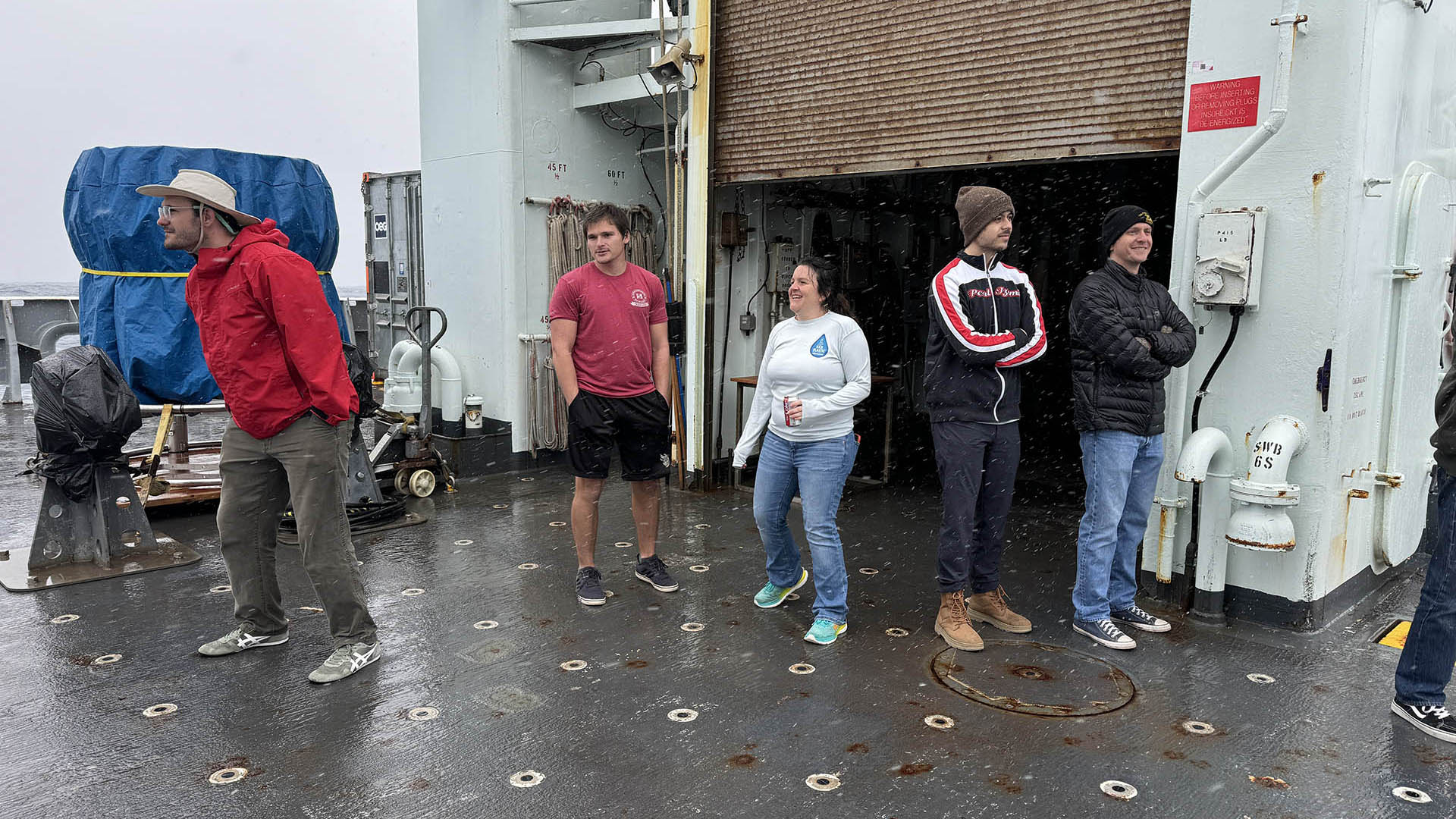
Scientists scurried outside in the light snow to catch a glimpse of our first enormous iceberg.
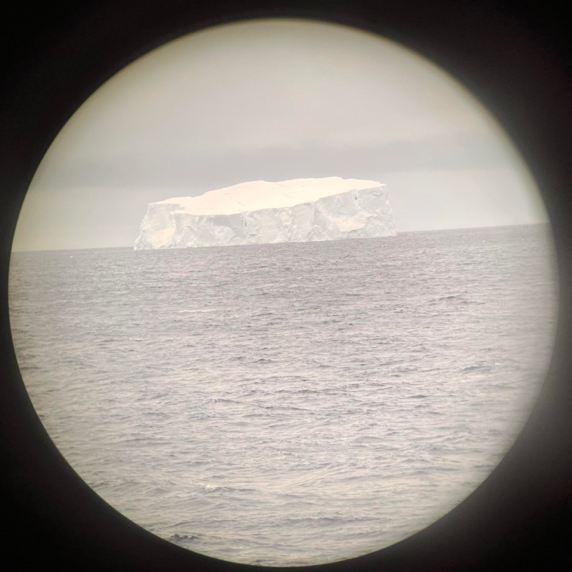
Picture of an iceberg taken with an iPhone through binoculars from the bridge of the R/V Thompson (photo S. Bigorre).
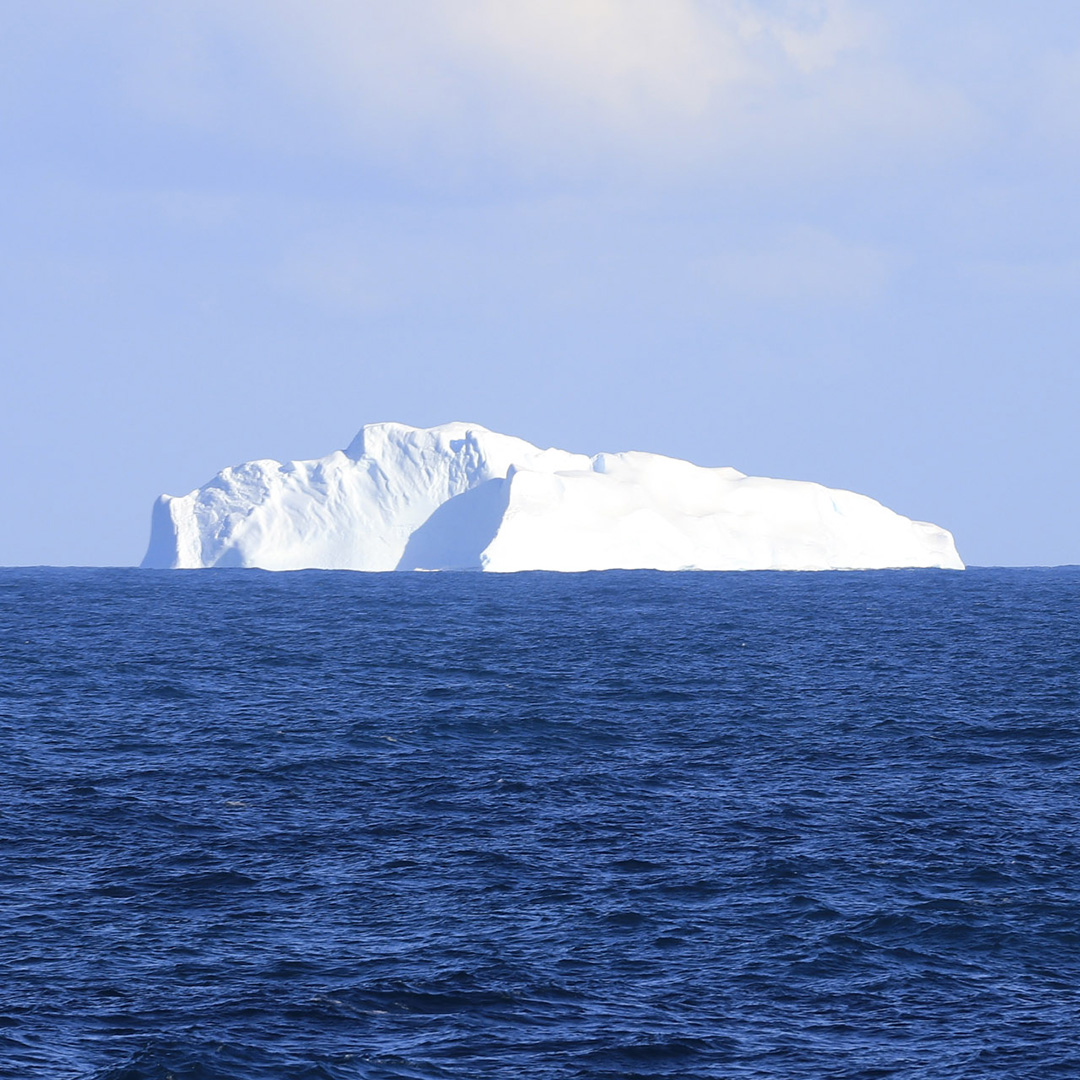
Another iceberg, bright white and beautiful in the sun.
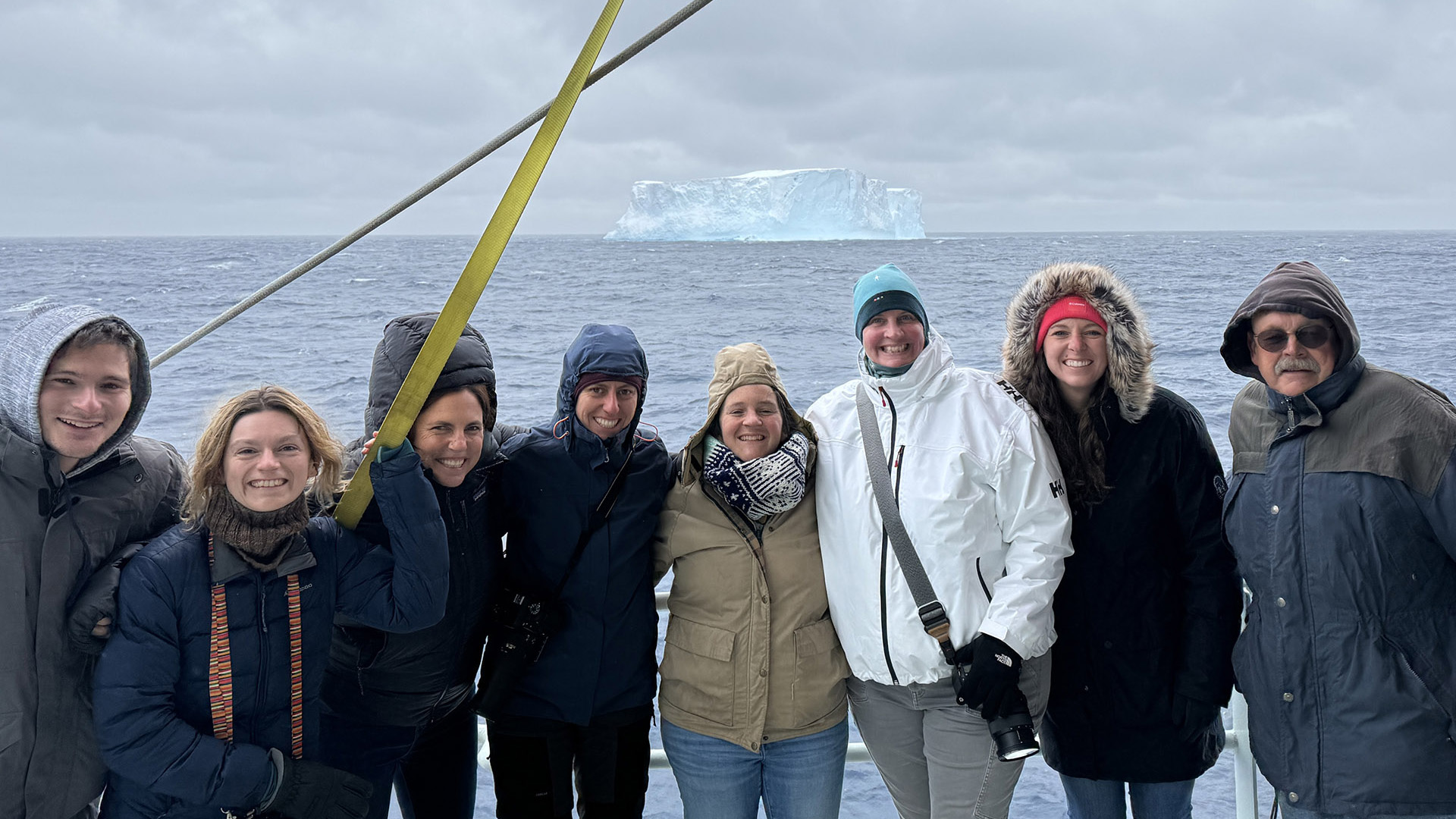
Everyone wanted to pose with the photogenic icebergs!
Southern Lights
Another unique phenomenon we got to see during our time in the Southern Ocean was the beautiful Aurora Australis—the Southern Lights! The Aurora is the name for the glow produced when electrons from space collide with atoms and molecules of the upper atmosphere and produce light. Although the Aurora is most commonly seen as a green glow, it can display a variety of colors depending on which atmospheric atoms and molecules are excited at different heights in the atmosphere.

After many days of grey skies and cloudy nights, we finally had a spectacular clear night and a view of the sparkling southern night sky.
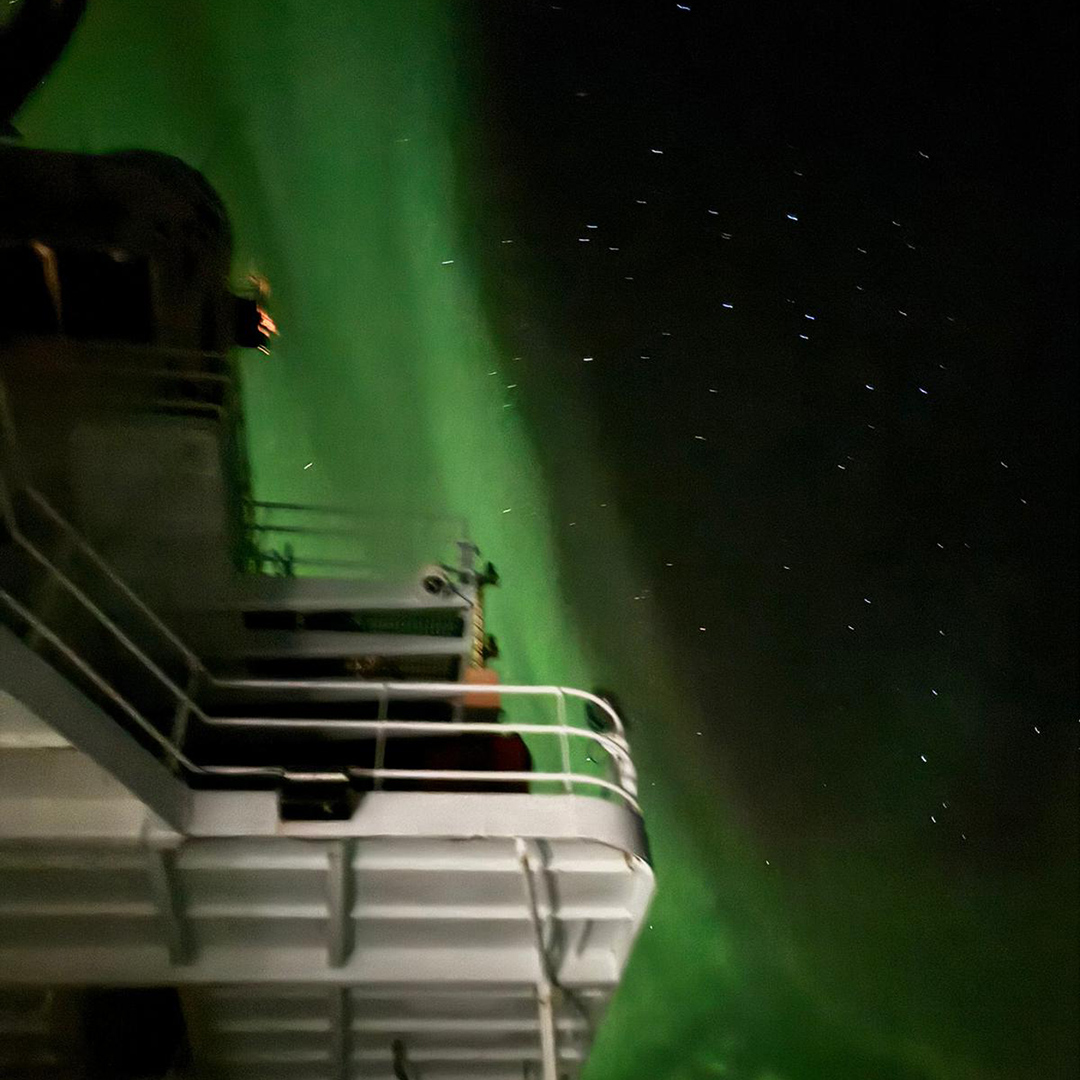
Later in the night, we were treated to our first show of the Southern Lights! (photo by J. LaDage).
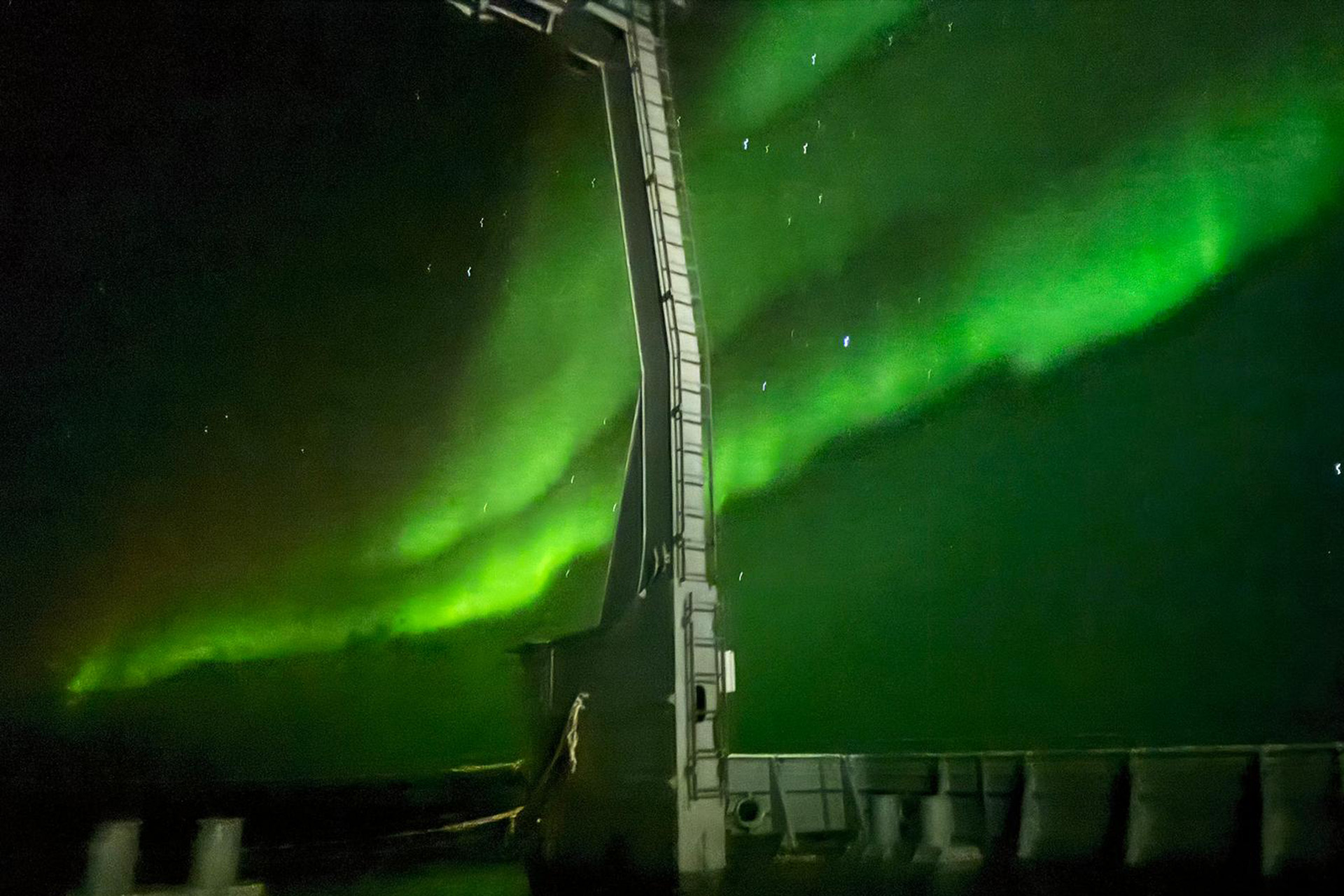
It was an amazing display of this atmospheric phenomenon. (photo by H. Kinkade).
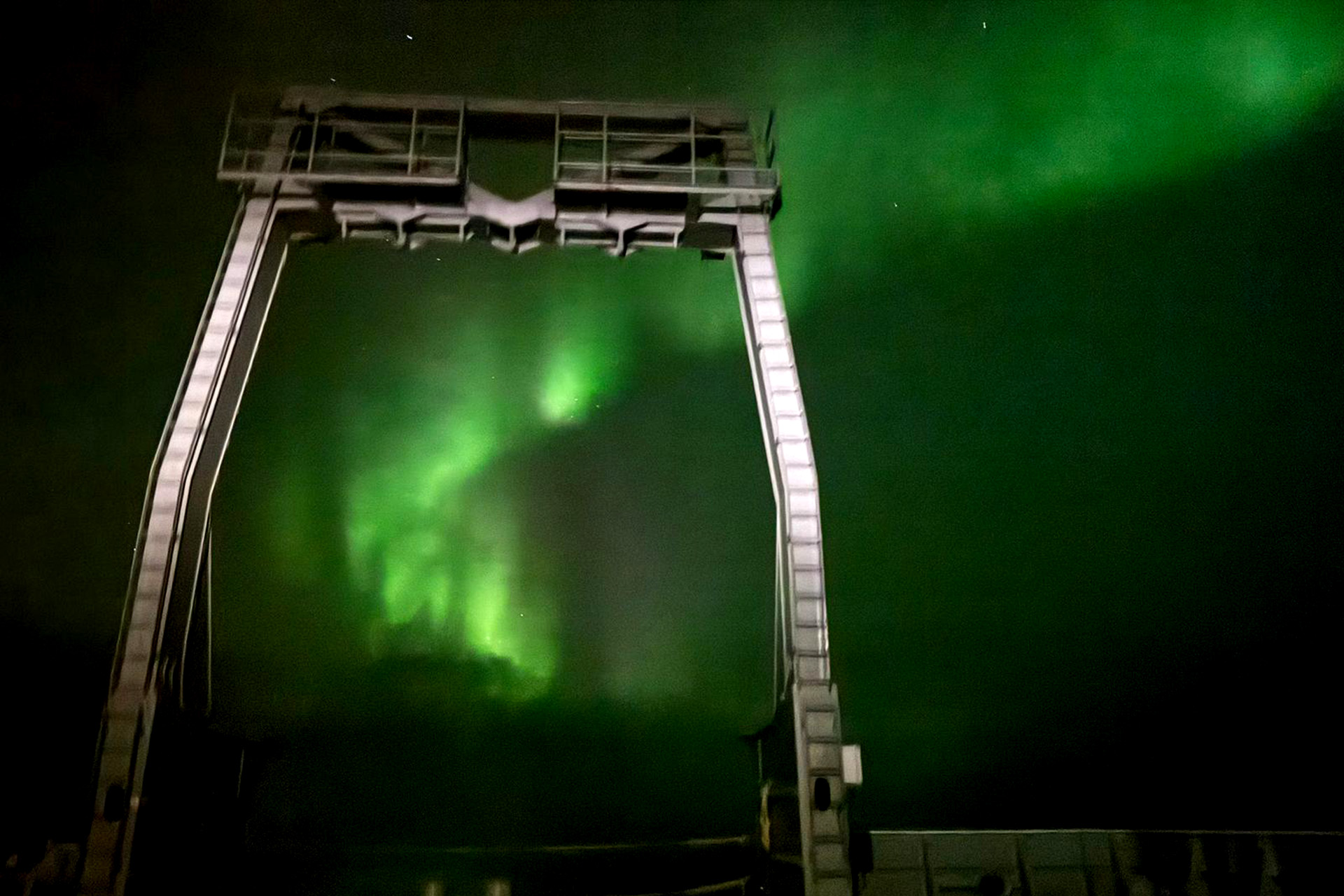
The intensity and colors just kept getting better and better. (photo by H. Kinkade).
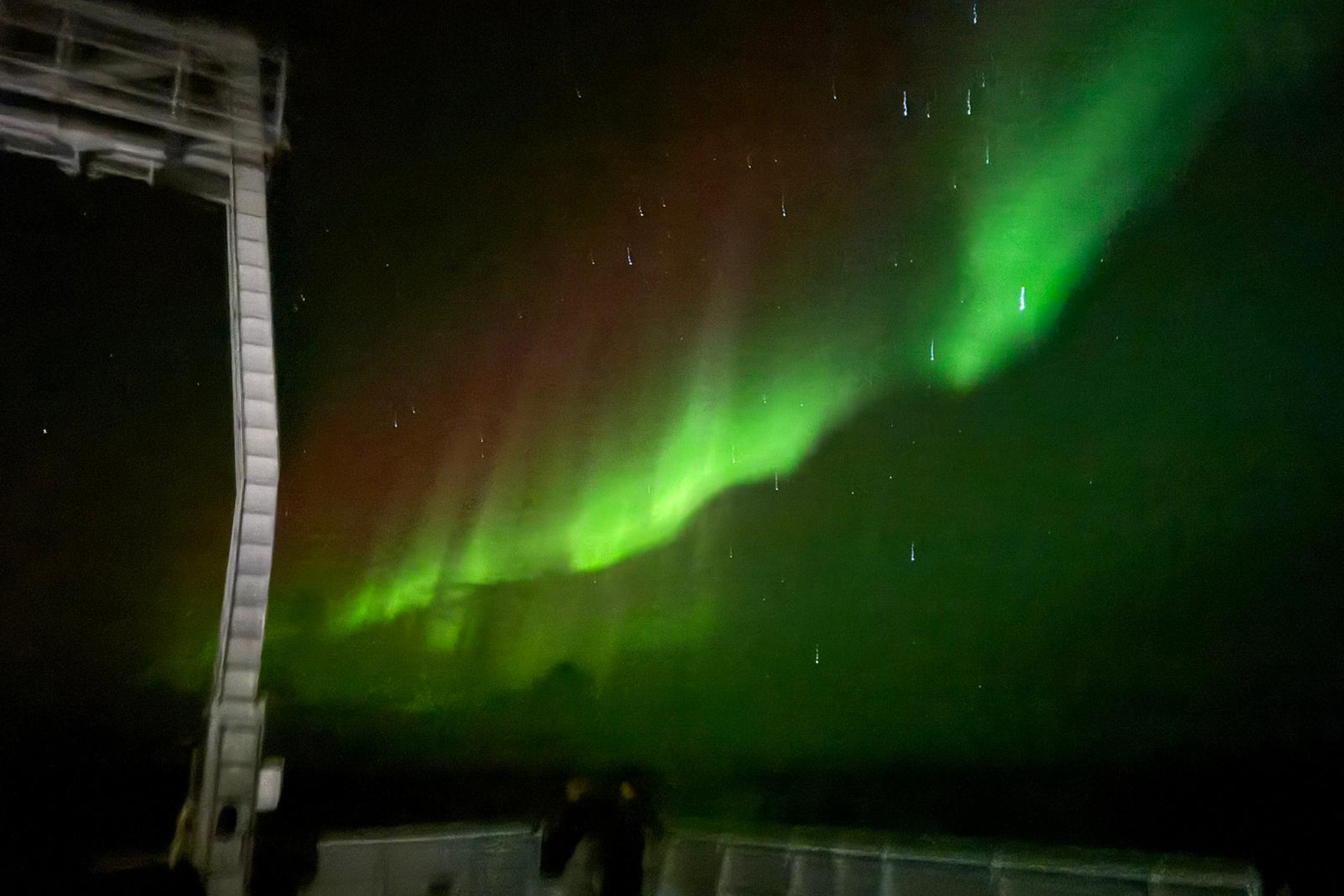
Late in the night, the night shift was treated to an amazing display with a variety of colors. Score one for the night shift! (photo by H. Kinkade).
So far, these displays of rare beauty—and the occasional whale or penguin sighting—have been enough to keep our spirits up while we continue the sampling cycle.
All images by Jennifer Magnusson unless otherwise noted.
